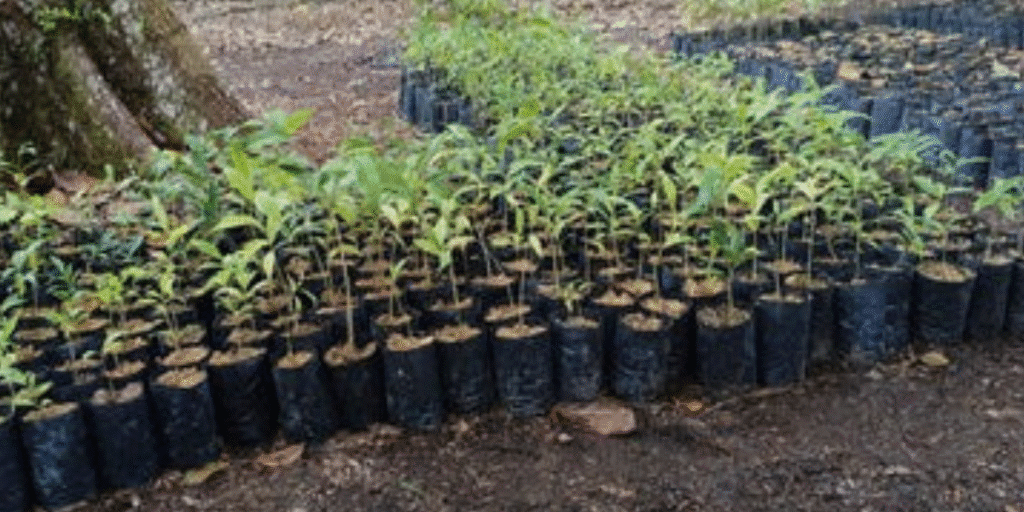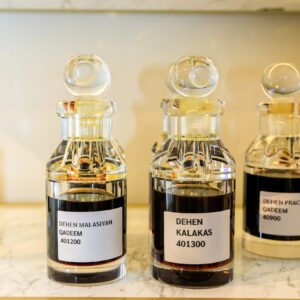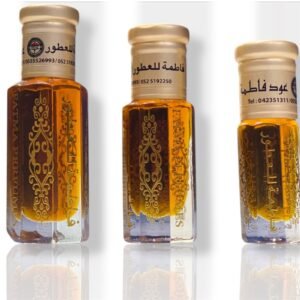Agarwood, often called “liquid gold” in the perfume world, comes from the heartwood of the Aquilaria tree. With its soaring demand in the UAE’s fragrance market, growing agarwood trees—whether at home or on a commercial scale—can be both a rewarding and profitable venture. In this guide, we’ll walk you through the entire process of cultivating agarwood trees, from selecting seeds to harvesting oud.
What is Agarwood and Why is it Valuable?

Agarwood is a dark, aromatic resin formed in Aquilaria trees when they become infected with certain molds. This resin is distilled into essential oil, known as oud, which is one of the most precious ingredients in perfumery—especially in Dubai and across the Middle East. The combination of rarity, fragrance, and religious significance makes agarwood highly sought after.
Can You Grow Agarwood Trees at Home in the UAE?
Yes, with the right climate, soil, and patience, growing agarwood trees at home or in small gardens is possible in the UAE. These trees thrive in tropical and subtropical climates, and with a controlled environment, they can adapt to UAE’s growing conditions.
Step-by-Step Guide to Growing Agarwood Trees
1. Choosing the Right Species
The most commonly used species for agarwood oud is Aquilaria malaccensis. Other species like Aquilaria crassna and Aquilaria sinensis are also viable options. Make sure to choose certified disease-free seeds or saplings.
2. Germinating the Seeds
- Soak agarwood seeds in water for 24 hours.
- Place them in a seedling tray filled with rich, moist soil.
- Keep the tray in a warm and shaded area.
- Sprouting usually takes 7–15 days.
3. Transplanting the Seedlings
Once the seedlings reach 10–15 cm in height, transplant them to pots or directly into the ground. Choose well-drained loamy soil enriched with organic compost. Ensure the planting site gets partial sunlight.
4. Agarwood Tree Care and Maintenance
- Watering: Regular but moderate watering is key. Avoid waterlogging.
- Fertilizers: Use nitrogen-rich fertilizer during the initial growth phase, followed by phosphorus and potassium for root development.
- Pruning: Light pruning encourages healthier growth.
- Pest Control: Keep an eye out for insects like leaf borers and aphids. Use organic pesticides where possible.
5. Agarwood Tree Maturation Period
Agarwood trees typically mature between 6–8 years before they’re ready for infection (resin production). The tree doesn’t naturally produce oud resin unless it’s infected or wounded.
6. Inducing Agarwood Resin Formation
To produce agarwood oud, artificial infection is often introduced commercially. Here are the methods:
- Traditional Wounding: Manually wounding the tree with a knife or drill.
- Biological Inoculation: Injecting fungal spores that trigger resin formation.
- Chemical Inoculation: Using specific chemicals that simulate natural infection.
This process encourages the tree to form resin in defense, which is the highly valuable agarwood.
7. Harvesting and Processing
Once resin forms (usually after 1–2 years post-infection), the agarwood is harvested:
- The infected wood is carefully cut and separated.
- It’s then distilled to extract agarwood oil or oud, or chipped for bakhoor and incense.
Is Commercial Agarwood Plantation Profitable in the UAE?
Absolutely. The UAE is a massive consumer of agarwood oud and agarwood perfume. Given the increasing interest in sustainable and locally sourced oud, establishing an agarwood plantation—even on a small scale—can yield long-term profits.
Challenges of Agarwood Cultivation
- Time: It takes 6–8 years before trees are ready.
- Infection Success Rate: Not all trees produce resin uniformly.
- Climate Sensitivity: Requires humidity and stable temperatures.
- Investment: Long-term investment with delayed returns.
Tips for Success
- Collaborate with local agricultural bodies for guidance.
- Join agarwood grower networks or cooperatives in the UAE.
- Use organic methods for higher-quality oud production.
- Explore government schemes or grants for sustainable farming.
Where to Use the Harvested Agarwood
- Oud Perfumes
- Agarwood Oil (for skincare or aromatherapy)
- Bakhoor and Incense
- Religious ceremonies
- Luxury Export
Conclusion
Whether you’re a home gardener passionate about fragrances or an entrepreneur eyeing a long-term investment, learning how to grow agarwood trees can open a door to a highly valuable and culturally rich industry. With rising demand in Dubai and across the UAE, stepping into the agarwood plantation business today can mean reaping great rewards tomorrow.
Frequently Asked Questions
Q: How long does it take to grow agarwood?
A: On average, 6–8 years before the tree is mature enough for resin induction.
Q: Can agarwood grow in pots?
A: Yes, during the initial years. But long-term growth requires soil depth and space.
Q: Is artificial infection safe for the tree?
A: Yes, when done correctly using trained methods, it doesn’t harm the tree extensively.









